Cloning and functional characterizations of an apoptogenic Hid gene in the Scuttle Fly, Megaselia scalaris (Diptera; Phoridae)
- PMID: 27940109
- PMCID: PMC5295500
- DOI: 10.1016/j.gene.2016.11.043
Cloning and functional characterizations of an apoptogenic Hid gene in the Scuttle Fly, Megaselia scalaris (Diptera; Phoridae)
Abstract
Although the mechanisms of apoptotic cell death have been well studied in the fruit fly, Drosophila melanogaster, it is unclear whether such mechanisms are conserved in other distantly related species. Using degenerate primers and PCR, we cloned a proapoptotic gene homologous to Head involution defective (Hid) from the Scuttle fly, Megaselia scalaris (MsHid). MsHid cDNA encodes a 197-amino acid-long polypeptide, which so far is the smallest HID protein. PCR analyses revealed that the MsHid gene consists of four exons and three introns. Ectopic expression of MsHid in various peptidergic neurons and non-neuronal tissues in Drosophila effectively induced apoptosis of these cells. However, deletion of either conserved domain, N-terminal IBM or C-terminal MTS, abolished the apoptogenic activity of MsHID, indicating that these two domains are indispensable. Expression of MsHid was found in all life stages, but more prominently in embryos and pupae. MsHid is actively expressed in the central nervous system (CNS), indicating its important role in CNS development. Together MsHID is likely to be an important cell death inducer during embryonic and post-embryonic development in this species. In addition, we found 2-fold induction of MsHid expression in UV-irradiated embryos, indicating a possible role for MsHid in UV-induced apoptosis.
Keywords: Apoptosis; Evolution; Hid; Peptidergic neurons.
Copyright © 2016 Elsevier B.V. All rights reserved.
Figures



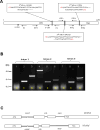
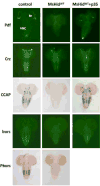
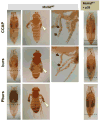

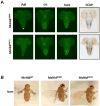
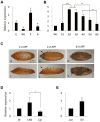
Similar articles
-
Pro-apoptotic cell death genes, hid and reaper, from the tephritid pest species, Anastrepha suspensa.Apoptosis. 2011 Aug;16(8):759-68. doi: 10.1007/s10495-011-0610-4. Apoptosis. 2011. PMID: 21630017
-
Developmental regulation and functions of the expression of the neuropeptide corazonin in Drosophila melanogaster.Cell Tissue Res. 2008 Mar;331(3):659-73. doi: 10.1007/s00441-007-0549-5. Epub 2007 Dec 18. Cell Tissue Res. 2008. PMID: 18087727
-
The head involution defective gene of Drosophila melanogaster functions in programmed cell death.Genes Dev. 1995 Jul 15;9(14):1694-708. doi: 10.1101/gad.9.14.1694. Genes Dev. 1995. PMID: 7622034
-
Regulation of Drosophila melanogaster pro-apoptotic gene hid.Apoptosis. 2009 Aug;14(8):943-9. doi: 10.1007/s10495-009-0374-2. Apoptosis. 2009. PMID: 19554451 Free PMC article. Review.
-
Natural history of the scuttle fly, Megaselia scalaris.Annu Rev Entomol. 2008;53:39-60. doi: 10.1146/annurev.ento.53.103106.093415. Annu Rev Entomol. 2008. PMID: 17622197 Review.
Cited by
-
Identifying and monitoring neurons that undergo metamorphosis-regulated cell death (metamorphoptosis) by a neuron-specific caspase sensor (Casor) in Drosophila melanogaster.Apoptosis. 2018 Jan;23(1):41-53. doi: 10.1007/s10495-017-1435-6. Apoptosis. 2018. PMID: 29224041 Free PMC article.
-
A complete morphological characterization of all life stages of the phorid fly Megaselia scalaris.Sci Rep. 2023 Dec 21;13(1):22933. doi: 10.1038/s41598-023-50200-6. Sci Rep. 2023. PMID: 38129567 Free PMC article.
-
Ultraspiracle-independent anti-apoptotic function of ecdysone receptors is required for the survival of larval peptidergic neurons via suppression of grim expression in Drosophila melanogaster.Apoptosis. 2019 Apr;24(3-4):256-268. doi: 10.1007/s10495-019-01514-2. Apoptosis. 2019. PMID: 30637539 Free PMC article.
-
Programmed cell death reshapes the central nervous system during metamorphosis in insects.Curr Opin Insect Sci. 2021 Feb;43:39-45. doi: 10.1016/j.cois.2020.09.015. Epub 2020 Oct 14. Curr Opin Insect Sci. 2021. PMID: 33065339 Free PMC article. Review.
-
Deep Conservation of Hid-Like RHG Gene Family Homologs in Winged Insects Revealed by "Taxon Hopping" BLAST.Insects. 2021 Oct 21;12(11):957. doi: 10.3390/insects12110957. Insects. 2021. PMID: 34821758 Free PMC article.
References
-
- Bergmann A, Agapite J, McCall KA, Steller H. Drosophila gene hid is a direct molecular target of Ras-dependent survival signaling. Cell. 1998;95:331–341. - PubMed
-
- Bergmann A, Tugentman M, Shilo BZ, Steller H. Regulation of cell number by MAPK-dependent control of apoptosis: a mechanism for trophic survival signaling. Dev Cell. 2002;2:159–170. - PubMed
-
- Brennecke J, Hipfner DR, Stark A, Russell RB, Cohen SM. bantam encodes a developmentally regulated microRNA that controls cell proliferation and regulates the proapoptotic gene hid in Drosophila. Cell. 2003;113:25–36. - PubMed
MeSH terms
Substances
Grants and funding
LinkOut - more resources
Full Text Sources
Other Literature Sources

